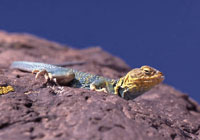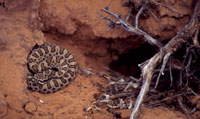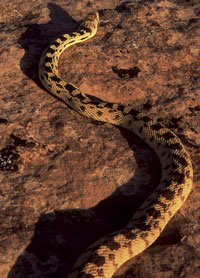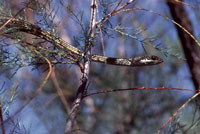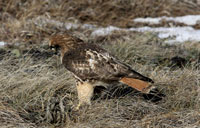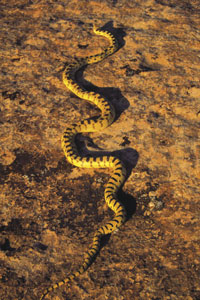Snakes are the Rodney Dangerfields of the reptilian world – they “don’t get no respect.” Just listen for the “oohs” and “aahs” when a western collard lizard is sighted along the trail versus the shrieks heard when a rattlesnake is seen.
Snakes and lizards are ectotherms, meaning they are cold-blooded and regulate their body temperature by absorbing heat from their surroundings. Many reptiles are active for only four or five months during the year; The remaining months are spent underground in hibernation areas called “hibernaculums,” which is Latin for “a tent for winter quarters.”
Several common Canyon Country species of snakes include garter snakes, gopher snakes, whipsnakes and rattlesnakes. Of the four, garter snakes are found more often in riparian or wetland areas. Though common, these snakes either quickly disappear into streamside vegetation or escape via the water swimming away like some sea serpent.
Whipsnakes which are found in riparian areas or drier upland areas, are often overlooked because they are tree-climbers and blend in well with a tree limb or branch. Rail thin, these snakes are well-named.
Gopher snakes, also known as bull snakes, are non-venomous snakes that may reach up to six feet long. Their yellow to cream-colored bodies bear dark spots on their backs, and the head is oval-shaped. When threatened, gopher snakes may coil up, vibrate their tail and hiss like a rattlesnake. They rely on the rattlesnake’s reputation to precede them and the gopher snakes utilize this mimicry to avoid trouble.
Ground predators like rattlesnakes, gopher snakes are also excellent climbers. I’ve observed these colorful snakes in cottonwood trees feeding on nestling robins, as well as traversing along canyon walls heading towards the nests of young cliff swallows.
Non-venomous snakes aside, rattlesnake top the list of snakes that don’t get any respect.
The midget faded rattlesnake is the common “buzzworm” of the Canyonlands Region. The genus Crotalus is represented by several subspecies, and means “rattle tail.” Cryptic in coloration, the midget faded is relatively short, about 2 feet in length. This pit viper has a triangular-shaped head, brownish spots outlined in black on the back and a small rattle or “resonator” at the tip of the tail. When vibrated the rattle produces an internationally recognized buzz that serves as a warning notice.
Rattlesnakes are mostly ambush predators and inject a neurotoxin into their prey through large hollow fangs. Unable to escape, the prey is consumed whole.
These snakes sense through infrared heat-sensing receptors located in pits between their eyes and mouth known as loreal pits. These sensors provide the rattlesnake with a thermal image, allowing the snakes to hunt at night.
The snakes also use their forked tongues to “smell” the air. When the tongue is stuck out it samples the air and ground. A very sensitive chemical receptor known as the Jacobson’s organ, located in the roof of the mouth, analyses this chemical sample and produces a signature of the snake’s surroundings. Named for a Danish surgeon, Ludwig Levin Jacobson, this organ is common to many vertebrates but well developed in snakes.
For all their negative publicity and history, snakes play an important role in the natural world as predator and prey. Although they may never make it off of the Dangerfield list, they should be respected for their amazing adaptations for living in the desert environment..

